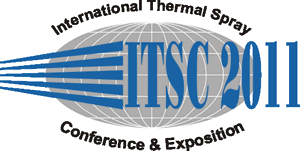
|
2972 |
|
Thursday, September 29, 2011, Saal B2.2 9:25 AM HVOF & Flame Spraying 2 |
|
Influence of HVOF spraying parameters on the wear resistance of Al-SiC composites coatings deposited on ZE41 magnesium alloy |
|
ANTONIO López* / REY JUAN CARLOS UNIVERSITY
DEPARTMENT OF MATERIALS SCIENCE AND ENGINEERING, SPAIN J. Rams/ DEPARTMENT OF MATERIALS SCIENCE AND ENGINEERING, REY JUAN CARLOS UNIVERSITY, SPAIN B. Torres/ DEPARTMENT OF MATERIALS SCIENCE AND ENGINEERING, REY JUAN CARLOS UNIVERSITY, P. Rodrigo/ DEPARTMENT OF MATERIALS SCIENCE AND ENGINEERING, REY JUAN CARLOS UNIVERSITY, SPAIN M. Campo/ DEPARTMENT OF MATERIALS SCIENCE AND ENGINEERING, REY JUAN CARLOS UNIVERSITY, SPAIN |
|
Magnesium alloys are attracting high attention due to their low density, high specific values of stiffness and strenght, great facility of processing and reasonable cost. These properties make these alloys suitable for application in many sectors and especially in the transportation one. Nevertheless, the use of magnesium alloys is limited because their low resistance to wear. In this work, as an alternative to improve the wear development of a Mg-Zn alloy (ZE41), Al and Al-SiCp composites coatings were prepared by High Velocity Oxygen Fuel (HVOF) spraying on the magnesium alloy substrates. The influence of coating parameters- such as reinforcement rate (from 0% to 50% vol. SiCp) size of SiCp and number of layers, as well as HVOF spraying parameters (spraying distance, transversal gun displacement)- in the microstructure and wear resistance of the final coatings was evaluated. The microstructure of the coatings, the wear tracks, the worn surfaces in the transversal section and the debris formed during the wear tests were characterized by scanning electron microscopy (SEM) and light microscopy. Adhesion pull-off strenght tests (ASTM D4541-02) of the different coatings were performed. Wear tests were carried out under dry sliding conditions using a pin-on-disc tribometer on the ZE41 substrate and on the different sprayed coatings. The magnesium alloy suffered minor degradation of its microstructure or mechanical properties after the deposition of the coatings with thickness from 100 to 200 µm. The obtained composite layers were almost free of porosity, with high adhesion to the substrate and after optimization of the sprayed conditions a substantial decrease in the specific wear rates were obtained. |